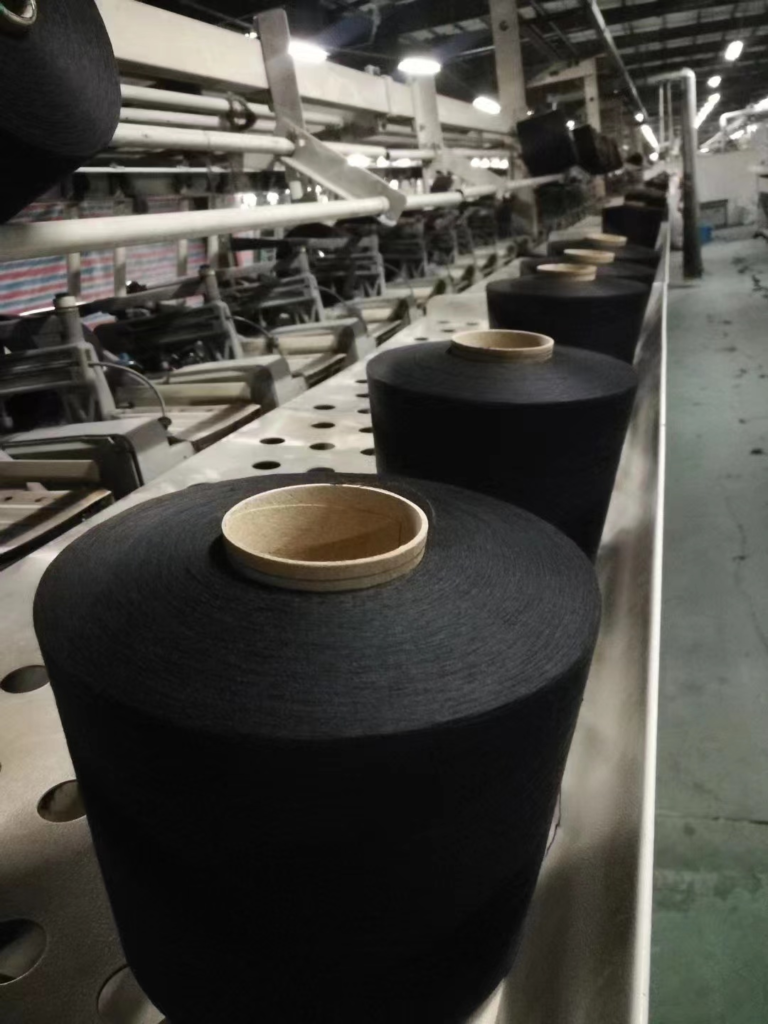Conventional spinning has traditionally consisted of a series of operations (performed by individual machines)and has involved a great deal of hand labor. Although continuous spinning and some automation have come into use, spinning is still a long and expensive process.
The different operations are designed to:
(1)Clean and parallel staple fibers.
(2)Draw them out into a fine strand.
(3) Twist them to keep them together and give them strength.
Spinning may be adapted to the characteristics of the fiber —length, cohesiveness, diameter,elasticity, and surface contour. Because the cotton system is representative, it is discussed here in detail.
*Opening loosens, cleans, blends the fibers. The fibers have been compressed very tightly in the bale and many have been stored in this state for a year or more. Machine-picked cotton contains a much higher percentage of trash and dirt than hand-picked cotton. So cleaning has become more complicated. Part of it is done at the gin. Cotton varies from bale to bale, so the fibers from several bales are blended together to give yarns of more uniform quality. The term “opening” here refers to the opening and cleaning operations (performed in the opening and blowing room of the cotton mill.) These operation include the opening or loosening of the baled cotton, the removing of impurities, the blending of fibers of different grades, and finally the forming of bleded fibers into laps ready for the caautomatic bale plucker or breaker, blender, step ofter the opening operation, there come several different operations. These are carding, drawing, combing, roving and spinning.
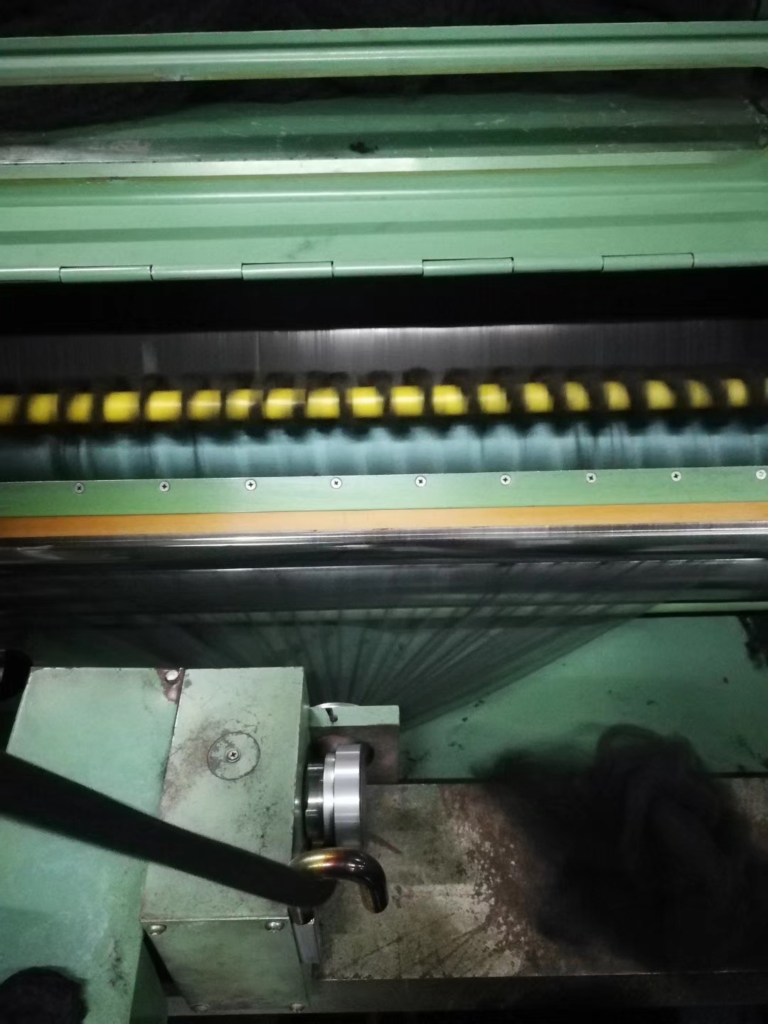
*Carding partially straightens the fibers and forms them into a thin web, which is brought together as a soft rope called a carded sliver. The carding machine consists of cylinders, flats, licker-in and doffers (covered with heavy fabric embedded with especially bent wires.
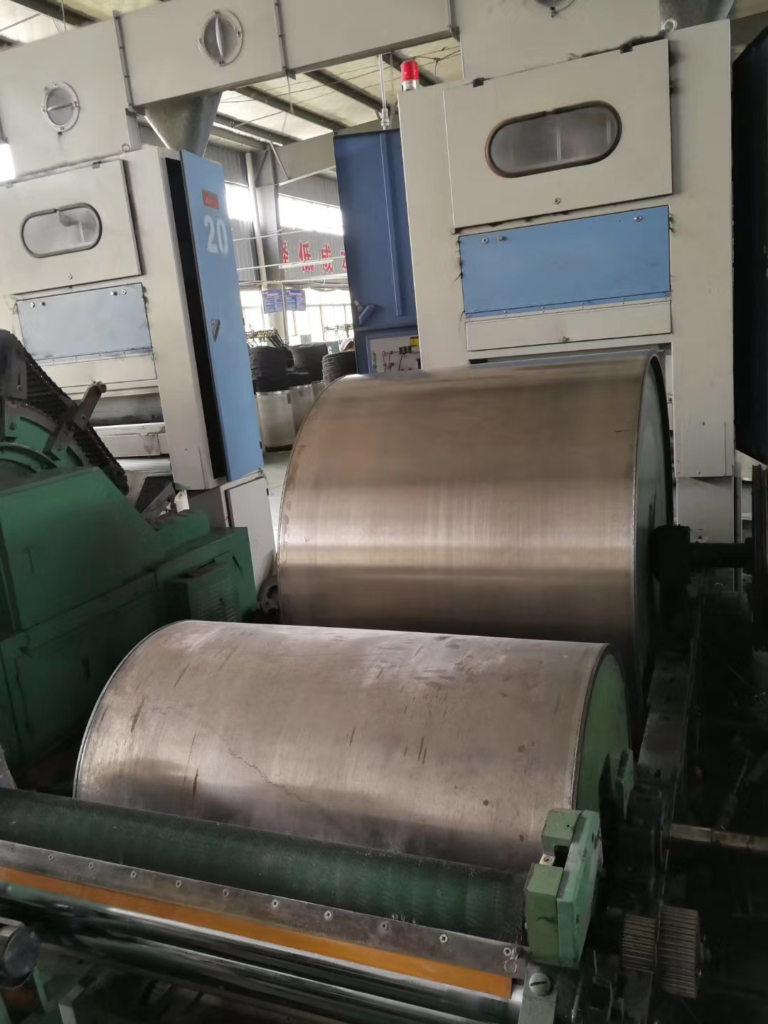
*drawing increases the parallelism of the fibers and combines several carded slivers into one drawn sliver. This is a blending operation (that contributes to greater yarn uniformity. Drawing is done by pairs of rollers, each pair running successively faster than the preceding one.
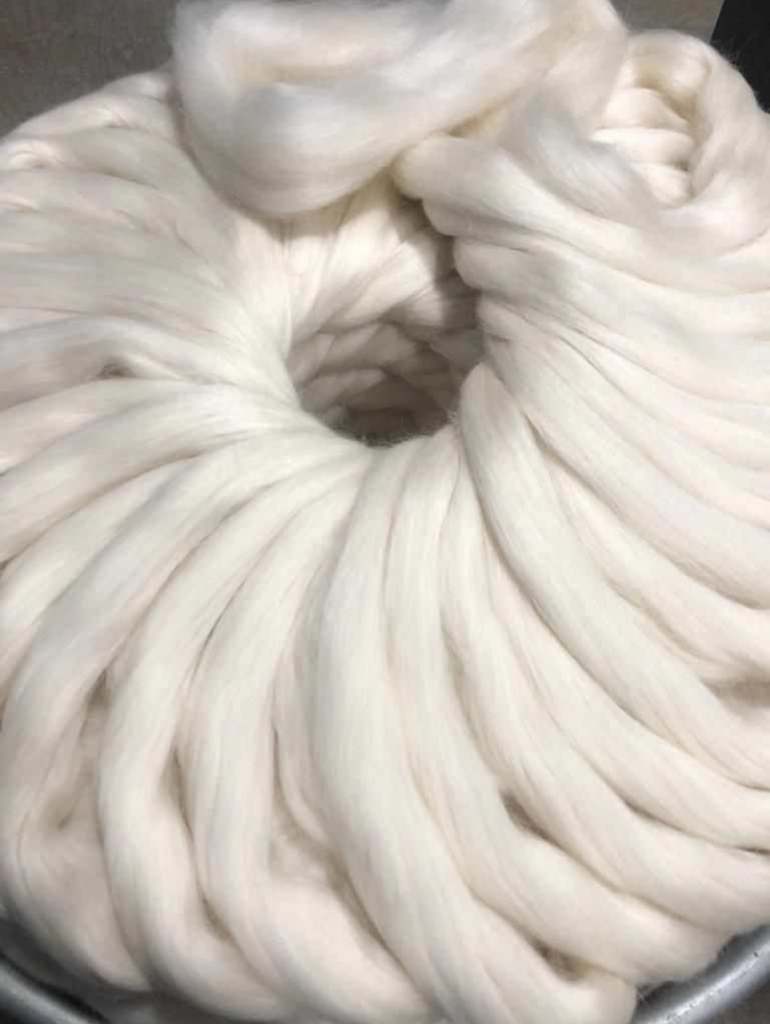
If long staple fibers are to be spun, carding and drawing will be followed by combing. The fundamental purpose of combing is to parallel fibers and to remove any short and crossed fibers from the long staple so that the combed fibers will be more uniform in length. Fibers emerge from the combing machine as combed sliver. The combing operation and the long staple fiber are costly and as much as one fourth of the fiber is combed out as waste.
*Roving reduces the drawn sliver, increases the parallelism of the fibers, and inserts small amount of twist. The product is called a roving. It is a softly twisted strand of fibers about the size of a pencil.
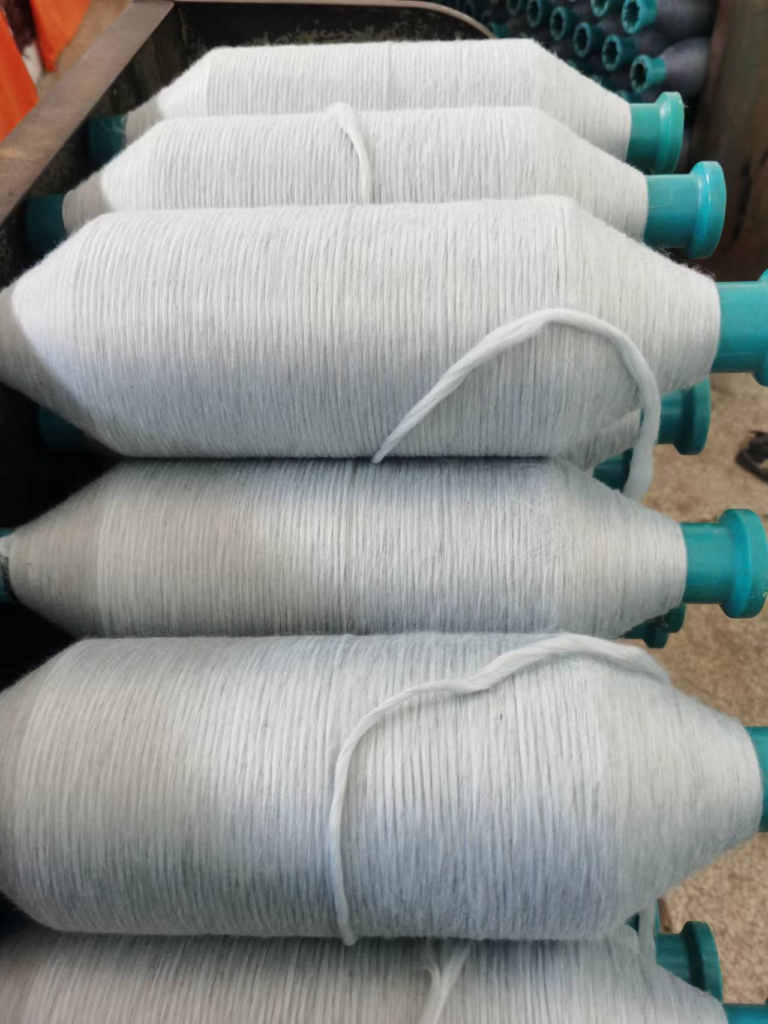
*Spinning adds the twist to make the yarn-a single spun yarn. There are different kinds of spinning ways ,some of them, for example, ring spinning ,flyer spinning, or cap spinning, draw the roving, twists the strands and winding separately. Cotton yarns are mostly spun by the ring spinning frame.
